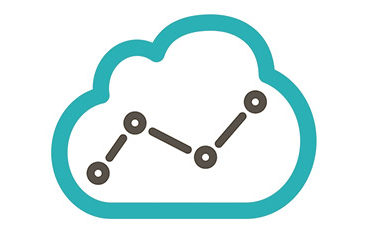MemSQL Touts 1st Real Time Data Warehouse for Cloud

via Shutterstock
Data lake vs. data warehouse: what’s the difference? Are they different? More to the point, what contrasting analytics workloads do they support?
While both store massive amounts of data in multiple formats from multiple sources, and though data lake is the newer term of the two, the difference is this, according to MemSQL CMO Gary Orenstein: a data warehouse supports dynamic, real time analytics applications.
“We see the market splitting,” Orenstein told EnterpriseTech. “There’s the operational data warehouse, which we equate as a real time data warehouse. The key criteria: the ability to load data continuously... The ability to do analytics instantly and have applications with analytics embedded into them that run continuously… The ability to compile queries – if you’re building an operational data warehouse you want those queries to be fast because they might be refreshing a real time business analytics dashboard.”
 Conversely, Orenstein said, a data lake supports batch-oriented retrospective analytics applications “where you batch things overnight or over a period of hours. There’s going to be a split between active data and static data. If it’s static, put it in the data lake. But if it’s active data, it’s operational or real time, on the front lines of your business.”
Conversely, Orenstein said, a data lake supports batch-oriented retrospective analytics applications “where you batch things overnight or over a period of hours. There’s going to be a split between active data and static data. If it’s static, put it in the data lake. But if it’s active data, it’s operational or real time, on the front lines of your business.”
No doubt some will take issue with Orenstein’s definitions. In any case, MemSQL has taken another step in its championing of the operational data warehouse with the launch of what it calls the first public cloud-based, real time data warehouse managed service for AI and machine learning. The ultimate benefit, the company says, is to expedite digital transformation.
MemSQL Cloud features a unified architecture for transactional, analytical, and streaming data warehouse workloads, the company said, that allows organizations to manage the service on both Amazon Web Services and Microsoft Azure - or in hybrid environments.
“Now customers can choose to use our managed cloud solution, deploy to any public cloud, operate in their own infrastructure, or a combination,” said Eric Frenkiel, MemSQL co-founder and CEO. “The freedom to choose among deployment options allows companies to architect advanced analytics solutions for today and give them the flexibility to adapt for tomorrow.”
According to MemSQL, the new product “provides enterprises with a powerful, highly available and immediate analytics engine that incorporates a single, consistent security model across its product portfolio.” MemSQL Cloud supports streaming ingest of data, performs ad-hoc queries and runs concurrent workloads.
The San Francisco-based company said the new cloud offering provides integrated, scalable cloud storage options, such as AWS Elastic Block Storage; system metrics with cluster visibility to monitor uptime and system performance; security provisions including built in access control lists. Users also can load data from companies, such as Informatica, and create dashboards with data visualization tools, such as Tableau.
MemSQL said DirectEmployers experienced a 50X improvement for the company, an organization providing recruitment and hiring pipeline analytics for Fortune1000 companies.
"With MemSQL Cloud, our application is more competitive because it now delivers faster analytics to our customers,” said Darrin Thompson, senior software engineer, DirectEmployers. “What made MemSQL Cloud a great solution was the ease and rapid setup we experienced with the product. It enabled us to get to market fast with a sophisticated analytics solution that just works."
MemSQL customer Thorn, international anti-human trafficking organization, utilizes MemSQL for real time image processing.
“At Thorn, we need to work with the best companies to fulfill our mission of leveraging advanced technology on behalf of some of our most vulnerable children,” said Julie Cordua, CEO, Thorn. “With the help of machine learning within MemSQL Cloud, we are able to significantly accelerate our image recognition capabilities to improve victim identification and ultimately combat abuse more effectively.”











